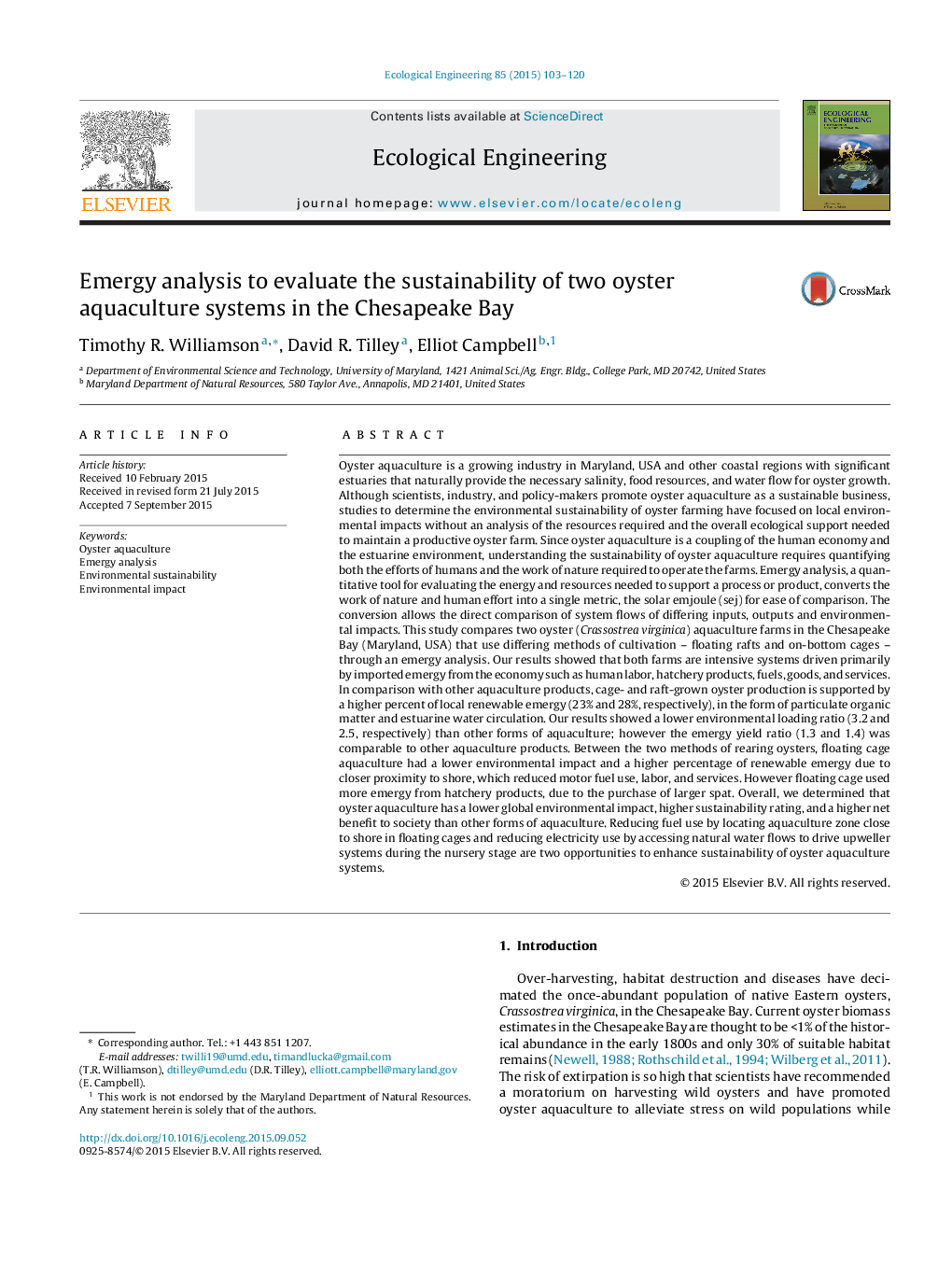| کد مقاله | کد نشریه | سال انتشار | مقاله انگلیسی | نسخه تمام متن |
|---|---|---|---|---|
| 6301593 | 1618014 | 2015 | 18 صفحه PDF | دانلود رایگان |
عنوان انگلیسی مقاله ISI
Emergy analysis to evaluate the sustainability of two oyster aquaculture systems in the Chesapeake Bay
ترجمه فارسی عنوان
تجزیه و تحلیل انرژی برای ارزیابی پایداری دو سیستم آبزی پروری صدف در خلیج چیسپیک
دانلود مقاله + سفارش ترجمه
دانلود مقاله ISI انگلیسی
رایگان برای ایرانیان
کلمات کلیدی
موضوعات مرتبط
علوم زیستی و بیوفناوری
علوم کشاورزی و بیولوژیک
بوم شناسی، تکامل، رفتار و سامانه شناسی
چکیده انگلیسی
Oyster aquaculture is a growing industry in Maryland, USA and other coastal regions with significant estuaries that naturally provide the necessary salinity, food resources, and water flow for oyster growth. Although scientists, industry, and policy-makers promote oyster aquaculture as a sustainable business, studies to determine the environmental sustainability of oyster farming have focused on local environmental impacts without an analysis of the resources required and the overall ecological support needed to maintain a productive oyster farm. Since oyster aquaculture is a coupling of the human economy and the estuarine environment, understanding the sustainability of oyster aquaculture requires quantifying both the efforts of humans and the work of nature required to operate the farms. Emergy analysis, a quantitative tool for evaluating the energy and resources needed to support a process or product, converts the work of nature and human effort into a single metric, the solar emjoule (sej) for ease of comparison. The conversion allows the direct comparison of system flows of differing inputs, outputs and environmental impacts. This study compares two oyster (Crassostrea virginica) aquaculture farms in the Chesapeake Bay (Maryland, USA) that use differing methods of cultivation - floating rafts and on-bottom cages - through an emergy analysis. Our results showed that both farms are intensive systems driven primarily by imported emergy from the economy such as human labor, hatchery products, fuels, goods, and services. In comparison with other aquaculture products, cage- and raft-grown oyster production is supported by a higher percent of local renewable emergy (23% and 28%, respectively), in the form of particulate organic matter and estuarine water circulation. Our results showed a lower environmental loading ratio (3.2 and 2.5, respectively) than other forms of aquaculture; however the emergy yield ratio (1.3 and 1.4) was comparable to other aquaculture products. Between the two methods of rearing oysters, floating cage aquaculture had a lower environmental impact and a higher percentage of renewable emergy due to closer proximity to shore, which reduced motor fuel use, labor, and services. However floating cage used more emergy from hatchery products, due to the purchase of larger spat. Overall, we determined that oyster aquaculture has a lower global environmental impact, higher sustainability rating, and a higher net benefit to society than other forms of aquaculture. Reducing fuel use by locating aquaculture zone close to shore in floating cages and reducing electricity use by accessing natural water flows to drive upweller systems during the nursery stage are two opportunities to enhance sustainability of oyster aquaculture systems.
ناشر
Database: Elsevier - ScienceDirect (ساینس دایرکت)
Journal: Ecological Engineering - Volume 85, December 2015, Pages 103-120
Journal: Ecological Engineering - Volume 85, December 2015, Pages 103-120
نویسندگان
Timothy R. Williamson, David R. Tilley, Elliot Campbell,
